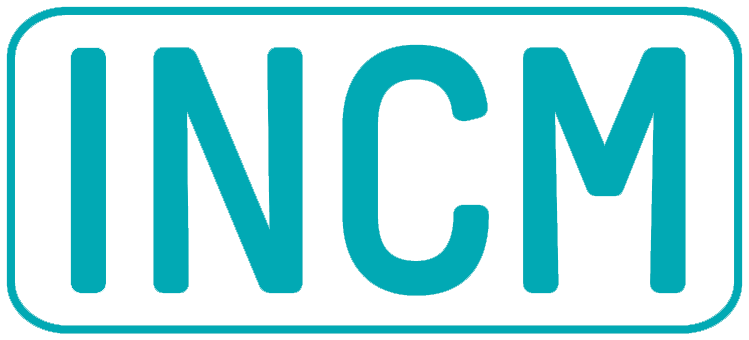Today’s post comes from Colleen Derr, Associate Professor Wesley Seminary.
Want the children in your ministry to not just learn about the Bible stories but be transformed by them? Want the lessons taught to not just be remembered but also result in changed lives? Increase the impact of teaching in five easy moves so that the children are not just well informed but transformed!
“Consider the worthiest purpose of education as that learners might become fully alive human beings.”1 If our desire is for the people whom we are called to serve to become “fully alive” in Christ and to live out their faith in the everydayness of life, how do we design teaching that results in this type of transformation? The teaching that often occurs in ministry settings does a great job of helping students remember and actively engage the stories. We strive for experiential learning that helps the children not just hear about but become a part of the biblical narrative. That is a great step toward engaging the children and creating interest. But what if the desire is for more than remembering and experiencing? What if we truly believed that children have the ability to experience spiritual transformation and growth? I believe they can be more and do more. I believe they are valuable members of the Kingdom of God and have a significant role to play in the Kingdom NOW. If you do as well, then consider five steps toward deeper engagement.
Move #1: Take Inventory
The first step in developing instruction that transforms is to take inventory of all the things that are in the teaching space – in the “room”. Ask the question: What’s in the room?
Everything in the room impacts your ability to teach and the student’s ability to learn. Some of the things are helpful, beneficial, and contribute positively to your teaching impact and the student’s engagement. Other things, however, are obstacles or hindrances to what you’ve designed and can result in distracting from the goals or perhaps even hijacking them! Have you ever found yourself developing a wonderful lesson to only have it go very wrong – you end up somewhere you never intended and you were clueless as to what went wrong? Perhaps there was something in the room that had a negative impact, something you may have been completely unaware of or something totally out of your control.
What is in the room? Take a look around and discover:
- There are things that are hidden but still “present” like the student’s home, school experience, friends, and family.
- Your skills, training, likes and dislikes, idiosyncrasies, philosophies, and theology are also present “in the room”.
- The room also holds the curriculum, hopefully the Scripture, and the Holy Spirit.
- The culture or ethos of your church is in the room and this particular gathering of people also has its own unique culture and ethos that impacts the room.
Take a moment and create a list: Take inventory and fill in as many things as you can think of that are “in your room”. Make sure to include all of the things that impact the senses: What is seen, heard, smelled, touched, and even tasted as well as the things that are not seen but present none the less! Now ask yourself of all those things on your list, which ones create opportunities and are seen as blessings and which ones are challenges or could be called “threats?”
- Question: How many of those things that are challenges or threats can you change?
- Circle them.
- Reflect on how you could change them and what change would require.
- Question: How many of those things that are challenges or threats can you not change and must you need to learn how to manage?
- Ignoring their presence is not helpful and neither is routine frustration over their presence.
- What is a possible and productive solution?
- How can the threat be eliminated?
- How can the challenge be turned into an opportunity?
- Question: How many of those things are blessings or opportunities to be capitalized on, utilized, and fully engaged?
Reflect on your preparation for this coming week – how does what’s in the room impact your lesson and approach to teaching? Are you aware? What can you embrace? What should you change? What do you need to manage?Step one – take inventory and ask yourself “what’s in the room?”
Move #2: Determine the Location
The second step in designing instruction that results in transformation is to determine the location of the children – their developmental location. After we have taken inventory of all the things in the room (step one), we are ready to move on in our instructional design to determining the unique location of every child in our care. Ask the question: Where are they?
There are generalizations we can make about a child’s developmental level based on age, but to get an accurate grasp of each child’s unique developmental level we must know them – spend time with them – and be observant
What is their location in terms of physical, cognitive, social, and emotional development?
- For children in the age range you serve, what is the “expected” level of physical development? Do your children meet those, exceed those, or have they not quite “arrived” yet? Are there factors that delay development?
- How does each child’s level of physical development impact your teaching moments? Do you create instruction, experiences, and movements that each child can physically participate in?
- What do they already know? Are they pre-readers or readers? Do they think concretely in what they can see/hear/feel/touch? Or can they make application and connection beyond what can be engaged by the physical senses?
- What have they already experienced? From previous teachers and experiences in your church context, at home, at school, with friends? No matter how young, they are not “blank slates” waiting to be “written on” but they come “pre-loaded” with a great deal of knowledge and experience – build on what they already know!
- How does what the children already know and what they have already experienced impact the way you develop your lessons and how you build connections between new information and experiences and “old” ones?
- How do they perceive information and learn?
- What is their learning style? Visual, auditory, kinesthetic, or tactile?
- What is their personality preference? Think in terms of the characters from Winnie the Pooh…which one are they? Owl – strong leaders, Pooh – get along and go along with everyone, Tigger – outgoing and high energy, or Eeyore – cautious and deliberate?
- How “smart” are they? Are they good with words, numbers, people, nature, music, drawing, dancing, or are they reflective?
- What do they need? Abraham Maslow, a social scientist, suggested that people experience five motivational needs: physiological, safety, love, esteem, and self-actualization. The “lower level” needs must be met before the higher needs can be addressed. In other words, a child cannot grasp love until their bellies are full and they feel safe.
Where the children in your ministry are “at” in terms of development, experiences, ability, personality, learning style, and needs determines what you say and how you say it – what you do and how you do it. Meet the children where they are – so you can help them grow as Jesus did: “in wisdom, stature, and in favor with God and man” (Luke 2:52)!
Where are they now?
Move #3: See the Destination
Based on what the students already know and where they are at (step two), we now look to determine the potential “destination” in the timeframe given. In step three we ask: Where can we go?
What are appropriate goals for this group of students with the resources and challenges available (step one) and in the timeframe given? How many months or years will these students be in your “room”?
A few pointers on how to develop goals that can get you where you want to go:
- Develop goals beginning with the farthest date and work backward to the present – five year, one year, one month, and next week goals.
We tend to want to start with goals for this week – the immediate. But that may result in disjointed learning. It is best to start with the big picture goals and then work our way backward. If we want our students by the end of this year to know, feel, and do these things then what do we need to accomplish each quarter to reach that goal? What do we need to accomplish each month to reach the quarterly goals? What do we need to accomplish this week to reach the monthly goals? Now we know how this week connects to next, and to next month, and to this quarter, and to the next, and eventually to the year. Can you see how the goal map comes together with each goal building on the next?
- Remember to develop goals that are holistic – in that they embrace the whole student (head, heart, and hands) not just one part of them!
Develop goals that answer the following questions:
- What do you want them to know (cognitive or head)
- What do you want them to do (behavioral or hands)
- What do you want them to feel (affective or heart)
Each timeframe should have at least one goal for each category – one head goal, one heart goal, and one hand goal.
- It is also important to develop goals that are measurable in order to assess goal attainment.
How will we know if we have reached our goals if we can’t measure them in some way – visually by watching them complete a task, through question and answer dialog, through observation of their behavior, partnering with the home, or encouraging self-evaluation. How will we know that students now know this? How will we know that students now do this? How will we know that students now feel this? Use action verbs in your goal writing.
“If you aim at nothing, that is exactly what you will hit!” We’ve heard that familiar saying before, and we know it is true. Spiritual formation is a journey and spiritual growth is a series of small steps along that journey – small steps leading in the same direction. If we want our students to experience spiritual formation or growth in Christ, then we need to have a destination in mind and a charted path to help us reach it. Obviously even our best plans are nothing without the work of the Holy Spirit to come before, during, and after. It is God’s Spirit at work in the hearts, minds, and lives of our students that results in spiritual growth, but we can be useful instruments to help create the experiences and opportunities for that goal.
Where are you going?
Move #4: Chart the Course
In the fourth step to extra-ordinary teaching or teaching that results in transformation, you determine what course you must follow in order to reach your destination and ask the question: How are we going to get there? The goals outlined in move #3 create a map, the measurable verbs used in each goal suggest a strategy, and in this step you define the instructional methods (what you will do) based on the map and strategies.
You must take into account:
- Who are you as the instructor (your strengths, experiences, and skills)
- What opportunities and challenges are present in the room
- Who the children are individually and corporately, and
- The desired outcomes for this season of instruction
With the weekly goals in mind, ask: What will we do this week to:
- Help the students know – do – feel?
What are the best instructional methods or teaching strategies to help each child with their various learning styles, personalities, past experiences, developmental milestones, and needs know, feel, and do whatever was pre-determined?
- Consider attention span needs, understanding that the typical “rule of thumb” is one minute for each age up to 12 – and then we are all 12 year olds!
- Consider engaging all of the senses so that children are able to hear it, say it, see it, feel, it, taste it, smell it and touch it.
- Consider how the brain grasps information. A great resource is Brain Rules by Medina.2 One key rule is you must “repeat to remember”!
- Contextualize the curriculum to “fit” every child.
The curriculum you have been provided will suggest some great learning experiences and teaching strategies. It is important to contextualize those to fit our students, your space, and your desired goals. While the curriculum will offer its own weekly and yearly goals, yours may be different than the “typical” student for whom the curriculum was written.
Some things to consider in contextualizing: your cultural context, the socio-economic needs, family dynamics, and over-all church vision. Published curriculum is a great starting point – but even the best curriculum needs adjusted to fit your students.
- What experiences do you need to provide so the students don’t just hear but actualize and personalize?
We all understand that experiential learning is the goal rather than just reception of information. But how do those experiences allow the students to really grasp what it was like to be Joseph sold out by his brothers or Jonah who got caught running away? And then to move beyond relating to the biblical characters to actualizing and personalizing the information – being able to say this was true for Joseph and that’s what it means for me. Help them to see the “so what?” of the biblical stories for their own lives: God was faithful to Joseph when his family abandoned him…and God will be faithful to me. When Jonah ran away, God found him even in the belly of a fish and God cares enough to know where I am – even when I feel all alone and in a yucky place.
Goals are necessary but are worthless without a sound strategy on how to achieve them. You may have the best destination in mind – but if you don’t have a clue how to get there, you’ll never reach it! Where are you going? How are you going to get there?
Move #5: Measure Success
In the final step towards creating a culture in your room where students experience transformation, we ask: How did we do?
How will we know if we have arrived at our destination and if transformation occurred? When will know if our children now know, feel, and do the things we had designed for them to know, feel, and do? We must measure success, and then we must celebrate!
In order to measure success pursue:
- Immediate reflection during the teaching moment.
While you are teaching, in the middle of the interactions and chaos of a learning environment, reflect on what is happening:
- How are the children responding?
- Are all the children engaged? Do you notice when some are and when some aren’t?
- Do they seem to “get” what is being discussed and experienced?
- What adjustments have you had to make “on the fly” and why?
- At the conclusion of the teaching moment and before you leave the room:
- Ask: How do we know the students now know?
- Ask: How do we know the students now do?
- Ask: How do we know the students now feel?
Some of these questions might take a week or more to determine, but are there immediate outcomes that have been realized? If so, what are they and how were they achieved? Does success look like anticipated or does it look a bit different?
- During preparation for the next lesson.
It is helpful to reflect during and after the lesson, but for long-term assessment it is beneficial to make a few notes of the experience and ask yourself: If I taught this lesson again, what would I do the same (and why) and what would I do differently (and how and why)?
How will you attack the planning for the future lesson based on your assessment of how successful this last lesson was?
- At prescribed timeframes. You developed long range, mid-range, and short-range goals at prescribed intervals based on your timeframe (move 3). Perhaps you developed five year, one year, quarterly, monthly, and weekly goals. Those are great prescribed timeframes to include a moment of reflection and assessment on goal attainment: How did we do?
At the conclusion of each timeframe ask:
- Where is transformation evident in the child’s life?
- And do we need to adjust goals and goal acquisition?
- At the end of the season – whatever that is. When a child transitions out of your ministry for a variety of reasons, reflect again on that child’s personal journey of faith.
- How have you seen them grow?
- What do they now know?
- How do they feel differently than when they arrived?
- What do they now do that demonstrates their spiritual growth?
And then CELEBRATE! Whatever goals were achieved and outcomes reached, there is a reason to celebrate. Celebrate with the children, the families, the volunteers and other workers, and remember, “all of heaven rejoices” with you!
Ultimately transformational teaching happens through the power of the Holy Spirit working through the teacher, the curriculum, and in the child. Transformational teaching relies on prayerful discernment during the process of preparation, in the moments of instructional design, and in the midst of the teaching moment.
Be purposeful, be strategic, be flexible, be honest, and be willing to ask: How did we do?
1 Groome, T. H. (2011). Will There Be Faith? New York, NY: Harper Collins.
2 Medina, J. (2009). Brain Rules. 12 Rules for Surviving and Thriving at Work, Home, and School. Seattle, WA: Pear Press.






